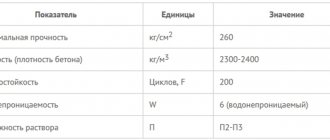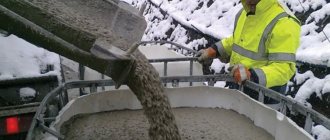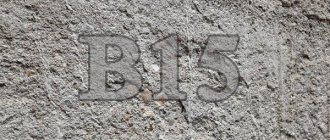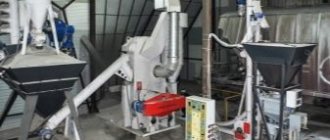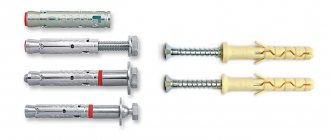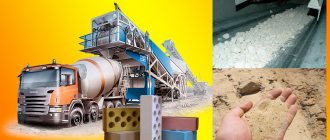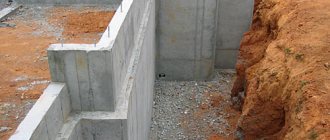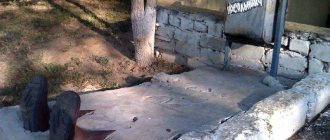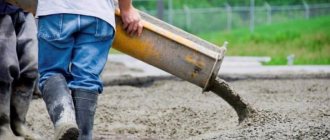State registration of the RosTestStandard certification system in the Federal Agency ROSSTANDART registration number ROSS RU.Z1527.04IZhRO
ROSTESTSTANDARD
Certification of products in the RosTestStandard center is carried out for compliance with technical regulations and established State safety and quality standards, we advise who issues, where and how to obtain, issue: a certificate of conformity, declarations of conformity, a certificate of state registration of products and a fire safety certificate. We determine exactly which of the above-mentioned permits is required to be issued according to the list of products subject to mandatory certification in the territory of the Customs Union (EAEU) or declaration of conformity.
STATE CERTIFICATION: 8 (800) 200-87-81 FREE CALL
| • Home | • Services | • Certificate of conformity | • Declaration of conformity | • To the manufacturer | • To the importer | • Technical regulations | • Commodity Nomenclature of Foreign Economic Activity of the EAEU | • Contacts |
Bibliography
| Name in Russian | Concrete is heavy and fine-grained. Specifications |
| Name in English | Heavy-weight and sand concretes. Specifications |
| Effective date | 01.01.2014 |
| OKS code | 91.100.30 |
| Number of pages | 20 |
| Status | Valid |
Specifications
The finished concrete mixture has a high specific gravity, which is approximately 1800–2500 kg/m³. the composition contains a large amount of cement, coarse and fine filler and water. The remaining additives depend on the manufacturer, but are regulated by the instructions of GOST 26633 2012. In the article you can read about how to calculate the specific gravity of concrete.
You can learn about the types of concrete and their use by reading this article.
The main characteristics are summarized in more detail in the table. There are five main types of concrete mixtures. The use of each of them is appropriate for its intended purpose, increasing the strength of the structure and giving it the necessary properties.
What are the proportions of concrete in buckets can be found in this article.
Table of concrete grades and their characteristics:
| No.: | Designation of concrete mortar: | Brand of cement used: | Specific gravity (kg/m³): | Waterproof: | Frost resistance: | Mobility (affects ease of installation): | Composition proportions (per 1 m³): | |||
| Cement, kg: | Sand, kg: | Crushed stone, kg: | Water, l: | |||||||
| 1. | At 15. | M 200. | 2400. | 6. | 200. | P 2. | 260. | 900. | 1086. | 155. |
| 2. | IN 20. | M 250. | 2390. | 6. | 200. | P 3. | 320. | 860. | 1040. | 165. |
| 3. | At 22.5. | M 300. | 2400. | 8. | 300. | P 3. | 360. | 830. | 1040. | 165. |
| 4. | At 25, | M 350. | 2395. | 8. | 300. | P 4. | 420. | 795. | 1000. | 175. |
| 5. | BSG V 30. | M 400. | 2410. | 10. | 300. | P 4. | 470. | 760. | 1000. | 175. |
The grade of cement plays an important role in creating high-quality heavy concrete. All possible variations are used, starting from M 100, for which the achievement of the required strength is ensured by special impurities. Concrete made using cement M 700 and higher is classified as super-heavy. But the most popular and in demand are concrete mixtures prepared using cement M 200–350.
What is the proportion of concrete for the foundation can be read from the article.
In the video - hydraulic concrete GOST 26633 2012:
Read more about the composition of heavy material
The main component is cement grade M 200 and higher. The properties of the finished mortar will depend on the quality of the cement. There are special additives that increase the strength and strength of the finished layer, but it is not recommended to use a deliberately “light” cement mixture.
What are the proportions of concrete for floor screed in a garage can be found in this article.
The coarse aggregate is usually gravel, granite, limestone or diabase, as well as other types of rock. The most suitable fraction of large elements is from 5 to 70 mm. The grade of components used must also be at least M 350 for limestone and M 450 for gravel inclusions.
Heavy concrete also contains small components: coarse and fine quartz sand. The predominance of fine-grained components is also characteristic of this type of concrete mixtures. They are called fine-grained or sand concrete. Due to their rather large specific gravity, such varieties also belong to the category of heavy concrete; technical characteristics and composition will be regulated by state standards.
You can read about the hardening time of concrete depending on temperature from the article.
Each manufacturer can use special additives at its own discretion. There is a list of the following recommended impurities for inclusion in the composition.
Additives to impart specific properties to the concrete composition:
- Plasticizers serve to create a more flexible and obedient mass. They have a complex effect; the main criteria for the finished solution will be an increase in mobility, strength, water resistance and uniformity. Prevents the mixture from sticking to the molding elements, the appearance of cracks and shrinkage of the finished surface. Thanks to the additive, the water requirement of the solution and the consumption of dry cement are reduced without the risk of loss of quality. They are also widely used among other building materials.
- Additives - accelerators to reduce the hardening time of the finished mixture will help to quickly obtain a high-quality coating. Typically, the concrete solution is completely ready for further use within 48 hours, depending on the area and thickness of the poured layer. The use of special chemicals speeds up this process by about 12 hours and will allow you to obtain a finished plane in a shorter time without compromising quality.
- An antifreeze additive is used to lower the freezing point of water, making it possible to pour concrete even at a temperature of -20º C. It is available in liquid form and in dry powder.
You can read about what concrete grade B 15 is and how it is used in the article.
It is best not to carry out such work in such extreme conditions, but if necessary, you can use additional insulation, heating of reinforcement structures and this special additive.
- Hydraulic additive for concrete helps improve the waterproofing of the finished layer. The great advantage of this substance will be the ability to “self-tighten” small (up to 0.4 mm thick) cracks on the surface.
- Defoamer , in contrast to the foaming agent used to saturate the concrete solution with air bubbles, is necessary for exactly the opposite purposes. With its help, air is quickly and effectively removed from the liquid solution, and the structure becomes homogeneous and dense. For heavy concrete, this is a necessary criterion indicating its quality.
What are the characteristics of concrete 200 can be read from the article.
Thanks to the defoamer, the hardened surface will have a smooth appearance without the characteristic “craters” and pits.
The use of special additives makes the solution more convenient to use, eliminating minor shortcomings and improving its advantages. Most builders prefer to work with improved concrete. This will significantly save time and effort, as well as some building materials. Such solutions are easier to install, and the finished surface has good strength and uniformity, without visible defects and imperfections.
You can read about the composition of M 400 concrete per 1 m-2 in this article.
Composition and proportions
Depending on the filler, lean concrete is divided into:
- fine-grained (crushed stone size from 3-5 mm to 10 mm);
- coarse-grained (10-20 mm, 20-40 mm).
The larger the filling component, the more water is required, but not less than 5% of the composition.
In production, Portland slag cement grades from M300 and higher act as binding components.
The water included in the material must be free of fats, surfactants, salts, and have a pH level of 4-12.5.
Active mineral substances are added, which slow down setting and hardening, give the mixture additional elasticity, density, water resistance, and increase frost resistance. The amount of plasticizers should not be more than 5% of the mass of the binder component.
Large crushed stone over 40 mm, as well as a large number (more than 10%) of dust particles in the mixture lead to a decrease in the quality of the solution and to non-compliance with the required characteristics.
When the water absorption of the filler is 0.1-2% per 1 m3 of mixture, it is necessary to take 120-145 liters of water, and at 2-8% - 145-165 liters.
The composition of various grades of lean concrete is given in the table:
Production technology
Lean concrete can be produced either in a factory or directly on a construction site.
There are stages:
- The components of the composition are prepared by washing, cleaning, sifting sand and crushed stone.
- In the factory, if necessary, for the production of individual brands, fillers and classifiers are additionally processed.
- Mix the components in a solid state.
- Add water, combining it with the dry mixture.
For large volumes, use a concrete mixer. If concrete is delivered from the plant, special vehicles are used.
GOST 26633-2012 for concrete: what characteristics does it determine?
What is GOST?
GOST is a state standard that determines the usefulness and safety of any product or item.
There is a GOST that determines the quality of concrete and cement mixtures used in repairs or construction. The use of concrete must comply with standards.
In this case, concrete GOST 26633-2012 is divided into several types of classification:
- Main purpose (structural and special).
- Depending on the types of aggregates (concrete mixtures produced using a denser type of aggregate, and mixtures using a special type of aggregate).
- Type of hardening (natural type of hardening and accelerated type under the influence of atmospheric pressure).
- Weight. According to compression strength classes, concrete comes in different grades in order of age (B-3.5, B-5, B-7.5, B-10, B-12.5, B-15, B-20, B-25 , V-30, V-35, V-40, V-45, V-50, V-55, V-60, V-70, V-80, V-90, V-100). It is permissible to use intermediate mixtures of weight class B-22.5 and B-27.5.
- Medium saturation. Heavy concrete mixtures of class D-2000, D-2500, fine-grained mixtures D-1800, D-2300.
- Frost-resistant.
- Waterproof.
- Wear resistance time.
Grades of concrete mixtures based on weight, frost-resistant, waterproof and wear-resistant are used in accordance with design standards and are mentioned in the standard. These data are indicated in technical documentation when creating design and technological documents for reinforced concrete and concrete structural elements.
The use of GOST 26633-2012 concrete directly depends on the working conditions. We must not forget that concrete work must be carried out in accordance with standards and adjusted in the relevant documents. The bulk of concrete work is of a hidden nature, that is, mixtures are used in the first stages of production.
Options for the grade of cement in concrete GOST 26633-2012 are required to be used depending on the type of operation of the reinforced concrete or concrete structure. Fillers for concrete mixtures include crushed stones of different fractions of rocks, crushed stones of different fractions from slag (light concrete mixtures). Also includes river or sea sand. In some cases, it is possible to mix different fractions of crushed stone with the addition of screenings.
Addition of chemicals to the mixture must also be done in accordance with standards and technological requirements. The composition of the chemical when added to concrete should not exceed 5% of the volume of cement. The combination of impurities with the substances of the concrete mixture must be checked during the selection of all components in the concrete.
In some cases, substances that do not meet the standards are sent for testing to special laboratories, after which conclusions are issued on the use of a particular material when added to concrete. The area of application of the mixture is also being studied, and the harmfulness to the body is assessed. These points are also regulated by GOST.
Advantages
- Own certified laboratory. Each batch of manufactured products undergoes quality control.
- Automated weighing complex. Loading is carried out under strict control, accuracy is maintained down to the kilogram.
- Qualified company managers. You can count on receiving complete information about GOST for heavy concrete and technical production conditions.
- A fleet of special equipment for delivery. The machines are equipped with a GPS control system. You receive the goods quickly without delays or downtime.
- Ease of ordering. You can buy concrete by calling, emailing or visiting the factory in person.
